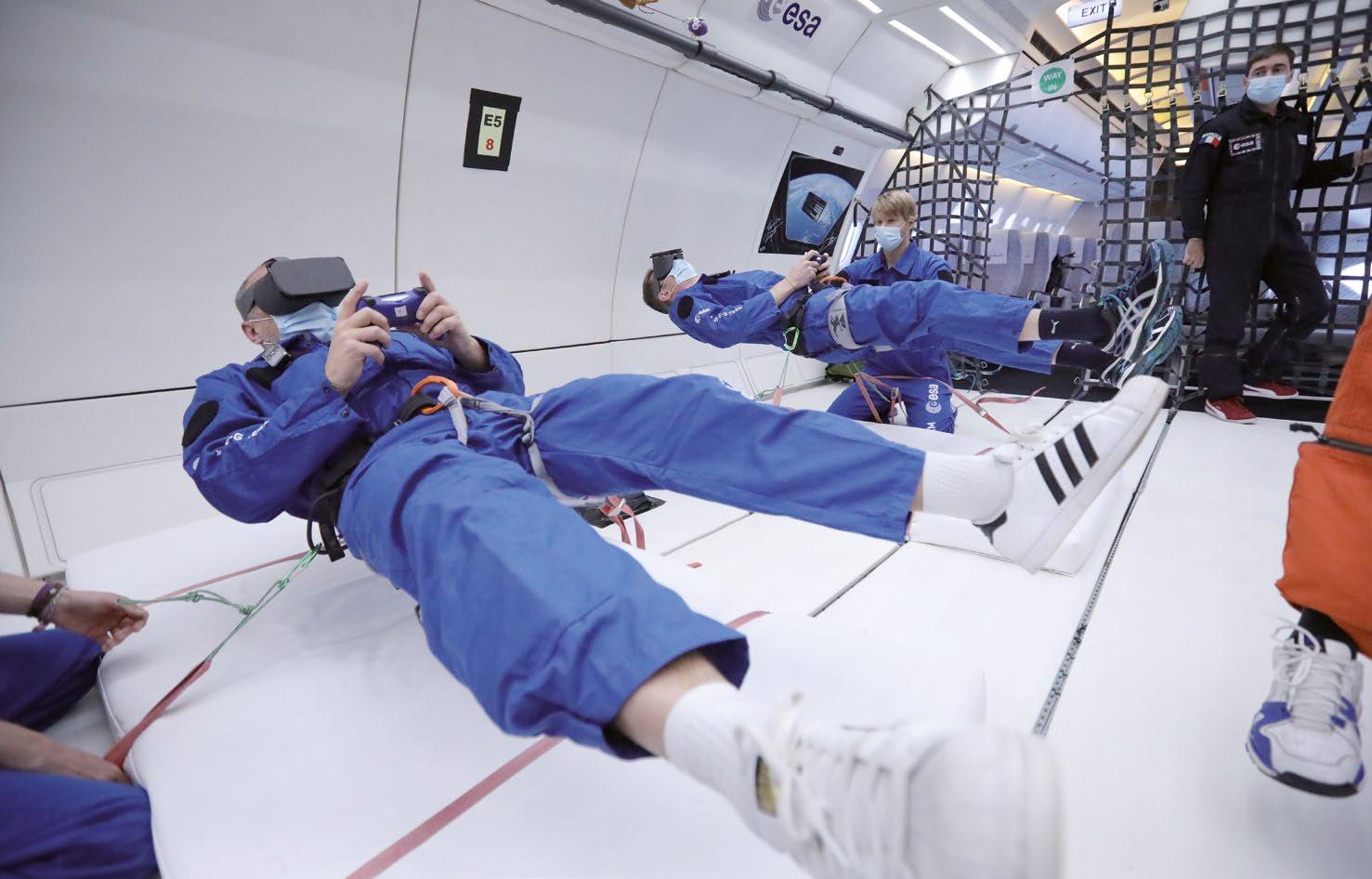
2 minute read
Playfully training emotional skills with AI
Sensory perception in space
H-BRS and a Canadian university investigate our senses during weightlessness
Everyone knows the feeling. You are sitting in a stationary train and think you are moving, but it is not moving at all. In fact it is the train on the next track over that is moving – an optical illusion. This phenomenon called “vection” often occurs in a similar way when the human body is experiencing weightlessness, as astronauts in space have often reported.
Parabolic flights and VR glasses
In the SMUG (Self-Motion under Varying States of Gravity) research project, scientists from H-BRS and Canada’s York University Toronto are investigating human sensory perception in a state of short-term weightlessness (microgravity). “We want to find out how changed gravitational states influence our own perception of movement”, explains Rainer Herpers, Professor of Computer Science and project leader of SMUG. On the one hand, the results should help astronauts to move more safely in space and avoid mistakes and accidents and on the other they should also be useful on Earth. Herpers says, “The results also help us understand why older people in particular fall more often”. In the research project, weightlessness is created during what are known as parabolic flights. Aircraft pilots from the company Novespace perform controlled dive flights that ensure that the aircraft and its contents – including the test subjects – are weightless for about 20 seconds. “The test subjects are equipped with VR goggles and have to estimate how far they have been moved through a virtual corridor”, says Herpers, describing the experimental procedure, which is additionally carried out before and after the flight.
Supported by the CSA and ESA
The data analysis will be carried out together with York University. The teams have been working closely together for many years. The project, which launched in 2019, receives financial support from the German Aerospace Center (DLR) and the German Federal Ministry of Economics and Technology, as well as from the Canadian Space Agency (CSA) and the European Space Agency (ESA). It is scheduled to end in March 2023. “In 2020, we conducted two campaigns and examined twelve test subjects”, Herpers tells us. One campaign consists of three flight days with two test subjects each. Up to three more campaigns are planned for 2021. Weightless for 20 seconds during a parabolic flight for research – it’s all about your own perception of movement










